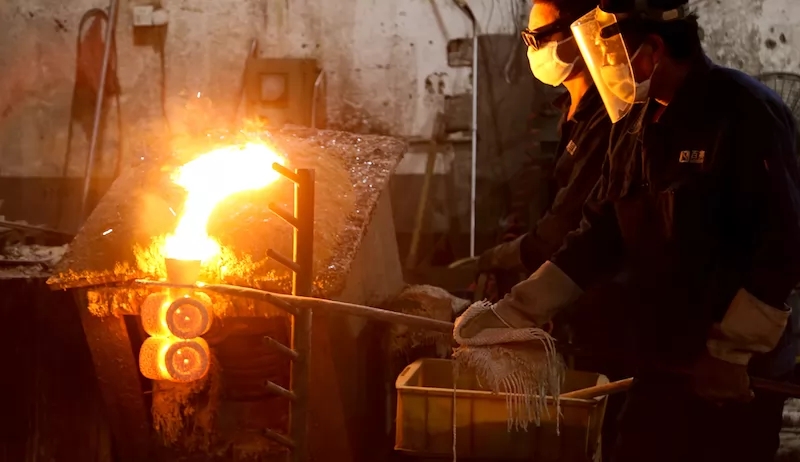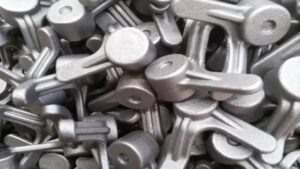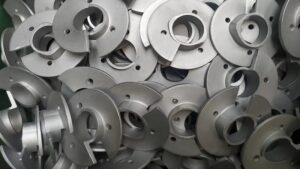Why Is Silica Sol Investment Casting So Expensive?
Many clients ask me this question, and the answer lies in the intricate process, superior materials, and unmatched precision of silica sol casting. To fully grasp its value, let’s first understand the fundamentals of casting.
Understanding Casting Methods

Casting is a manufacturing process where molten metal is poured into a mold, solidifying into a part with a specific shape, size, and properties. There are three primary casting methods:
-
Sand Casting – Uses expendable sand molds, ideal for large, low-cost parts but with rough surfaces.
-
Die Casting – Utilizes reusable metal molds for high-volume production, but limited to non-ferrous metals.
-
Investment Casting (Lost Wax Casting) – The most precise method, where a wax model is coated in ceramic, melted away, and replaced with metal.
Since silica sol casting is an advanced form of investment casting, we’ll focus on this method.
The Silica Sol Investment Casting Process
The lost wax method involves creating a wax replica of the desired part, coating it in multiple layers of refractory material (sand or ceramic slurry), and then melting out the wax to leave a hollow mold. The mold is fired at high temperatures to strengthen it before molten metal is poured in.
While this method delivers exceptional accuracy, it involves:
-
High material costs (premium wax, zircon sand, and ceramic binders).
-
Multiple heating cycles (dewaxing, sintering, and casting).
-
Advanced equipment (hydraulic wax injectors, electric furnaces).
The result? A near-net-shape casting with a surface roughness of Ra 3.2-6.3 μm, drastically reducing machining needs and saving time and cost in post-processing.
Silica Sol vs. Water Glass Investment Casting
Many manufacturers opt for water glass casting due to its lower cost, but silica sol offers superior quality. Here’s a detailed comparison:
| Aspect | Water Glass Process | Silica Sol Process |
|---|---|---|
| Surface Roughness | Ra 12.5-50 μm (rougher, requires more machining) | Ra 3.2-6.3 μm (smoother, near-net-shape) |
| Wax Injection Equipment | Domestic pneumatic machines (lower precision) | Imported hydraulic machines (high precision) |
| Wax Material | Domestic low-temp wax (~$700/ton) | Imported medium-temp wax (~$2,900/ton) |
| Shell Material | Domestic quartz sand & powder (lower strength) | Imported zircon sand & powder (higher refractory) |
| Dewaxing Method | Boiling water (can cause shell cracks) | Electric dewaxing furnace (controlled, no cracks) |
| Roasting Furnace | Coal-fired (max 900°C, inconsistent) | Electric (up to 1100°C, uniform heating) |
| Casting Furnace | 400KG capacity (slower, less precise) | 150KG fast-cast furnace (stable temp, high efficiency) |
Why Silica Sol Costs More – And Why It’s Worth It
-
Precision & Surface Finish – Minimizes machining, saving time and material waste.
-
Superior Materials – High-temp wax and zircon shells ensure dimensional stability.
-
Advanced Equipment – Electric furnaces and hydraulic injection improve consistency.
-
Lower Defect Rates – Fewer cracks, inclusions, or distortions compared to water glass.
For industries like aerospace, medical, and high-end automotive, where precision is critical, silica sol casting is the gold standard. While the initial cost is higher, the long-term savings in machining and quality assurance make it a smart investment.
Would you like a cost-benefit analysis for your specific project? Let’s discuss how silica sol can optimize your production!

Products made through water glass process

Products made through silica sol process
The divergence in production methodologies creates a significant disparity in product outcomes. Components manufactured through the silica sol investment casting process consistently achieve ±0.15mm dimensional tolerance and Ra 3.2µm surface finish, outperforming water glass (sodium silicate) casting which typically maintains ±0.5mm tolerance and Ra 12.5µm roughness. This technological gap translates to tangible quality differences: our silica sol castings require 30-40% less post-processing compared to conventional alternatives. While premium precision justifies its value, budget-conscious solutions exist – we simply advocate transparent alignment between cost expectations and quality realities. Every procurement decision balances engineering requirements with fiscal pragmatism.
To quantify the advantages: Our silica sol casting technology reduces machining time by 55% through near-net-shape capabilities and eliminates 72% of surface defects common in water glass products. These efficiencies translate to 18-25% overall cost savings across high-volume production batches when factoring in reduced rework, material waste, and accelerated time-to-market. The initial price differential becomes strategically insignificant when calculating total lifecycle value.
Your specifications dictate our process selection. Whether prioritizing precision economics or cost-driven prototyping, China Metal Castings delivers tailored solutions through:
-
Digital pattern replication (3D scanning/printing compatible)
-
Multi-material capabilities (stainless, carbon steel, superalloys)
-
CT-scan quality verification (upon request)
-
Integrated CNC finishing (turnkey solutions)
Our operational philosophy rests on six pillars:
• Integrity-Driven Partnerships – Transparent pricing, IP protection, and ethical operations
• Engineering Perseverance – 78% of technical staff hold AS9100/ISO-certified training
• Continuous Innovation – 6.5% annual revenue reinvested in process R&D
• Knowledge Integration – Real-time implementation of ASTM/SAE updates
• Supply Chain Accountability – Full traceability from raw material to shipment
• Competitive Evolution – 23% YoY productivity growth since 2018
When you engage China Metal Castings, you secure more than a supplier – you gain a technical ally committed to transforming your concepts into market-ready precision components.






